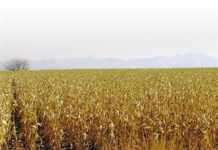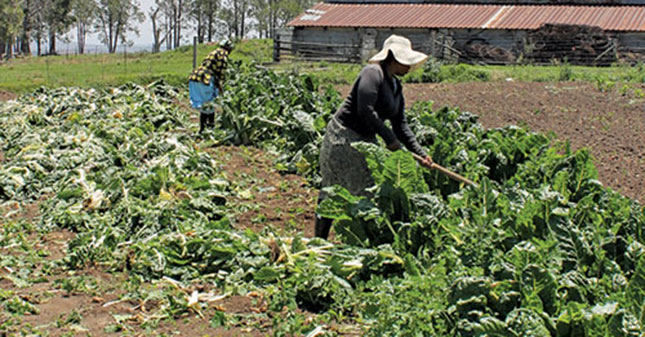Tell us about your expertise and line of work
I graduated from the University of Cape Town with a PhD in Zoology and followed this with four years of postdoctoral research in the Kalahari with Cambridge University and the University of Paris. In 2002 I started as senior lecturer in the zoology department at UCT where I currently work as an associate professor and deputy dean of postgraduate affairs. My broad field of research expertise is behavioural ecology with an emphasis on human-wildlife conflict and behaviour in conservation.
Describe the types and impacts of problem animals in SA’s commercial timber plantations?
There are numerous animals that impact adversely on commercial forestry with insects almost certainly topping the list. Among the vertebrates, small and medium sized rodents, such as porcupine, may ring bark young pine trees while antelope, including kudu, eland, bushbuck and duiker, may browse tree seedlings or scrape bark off trees with their horns.
However, baboons are responsible for the majority of the damage as they strip bark off large numbers of trees, often high up the trunk. This effectively stunts or kills the tree. Stunting can manifest as reduced or skewed growth with reduced timber quality and yield. The damage is estimated to cost the industry millions each year.
.jpg)
Prof Justin O’ Riain
Predominantly where in SA are baboons causing the most damage?
There are reports of damage extending from the Western Cape through to Mpumalanga but the damage varies dramatically at local and regional plantations. Why this is the case we don’t know. It would appear that the most damage is being done in Mpumalanga. One of our first research priorities is to perform a landscape level analysis of the locality and severity of the damage within different plantations in the province.
As a first step, we will be attempting to derive physical and spatial predictors of damage, for example altitude and the proximity of damaged plantations to public/private protected areas. Then hopefully, within plantations, overlay data specific to baboons, for example, population density, percentage overlap with neighbouring troops and sex ratios.
Why are baboons attracted to commercial forestry plantations?
It would appear that baboons use plantations as a refuge within an increasingly human- modified and hostile landscape. Plantation managers typically have a strong environmental and conservation background and welcome wildlife onto plantations. By contrast, most other types of land use, including urbanisation and agricultural crop planting, are not compatible with wildlife and actively shun baboons that are seen as direct competitors for food.
What we aim to do is assess how land use has changed within select regions and see what land is left for baboons. It is our thinking that baboons are common within plantations because they offer a refuge from other, more intensively managed areas. In addition, they offer abundant sleeping sites, access to water, and both natural and exotic food within the kloofs and wetland surrounds.
Historically, what have been the control measures used to try and stop baboons from damaging commercial forestry plantations?
A total of 47 different methods, to mitigate baboon-induced damage, were recently reviewed in a workshop attended by relevant stakeholders and scientists. Methods ranged from genetically modified trees that impart a bad taste, through to the planting of sacrificial food trees on plantation edges. While many of the methods were excluded as being either impractical or cost prohibitive, the more traditional African approaches of chasing baboons away using either people, dogs or loud bangs, have been used.
Have these control measures been successful?
The physical extent of plantations coupled with the speed, agility and strength in numbers of baboons have effectively neutralised the success of either the people (too slow), or dogs (too vulnerable to attack) approach. Given the tangible threats to baboons outside plantations, in agricultural and urban areas, the incentive for baboons to remain in plantations is typically higher than the deterrents that can be viably imposed by plantation managers.
Barriers and deterrents are considered viable options for small areas with sensitive growth phases, such as for recently planted seedlings. But no single barrier, aversion or deterrent method was considered to offer a long-term sustainable solution to the damage, given the sheer extent of plantations and baboon numbers within most plantations. Any attempt to permanently exclude baboons from plantations would greatly reduce the total land available to them and force them into direct conflict with other landowners with a lower threshold for baboons.
Has there been a move away from these historical control measures?
More recently, plantation managers have finally resorted to managing baboon numbers with the goal of reducing the number of troops and density to resemble those of populations living exclusively in natural areas. To date this has been achieved on one plantation only and long-term monitoring of the remaining baboons’ spatial ecology and the damage they cause to trees will determine whether a more natural density can reduce damage to acceptable levels.
What are your thoughts on how baboon-plantation conflict can be minimised?
It is imperative to search for a win-win solution where baboons can persist in plantations while damage is minimised. To achieve this we need to understand the drivers of damage and that is why the Baboon Research Unit at UCT was asked to partner with the Institute for Commercial Forestry Research. We have experience in understanding the causes, consequences and mitigating factors of human-baboon conflict in addition to an understanding of the spatial ecology and behaviour of baboons living within plantations versus natural areas.
It is my contention that we will only make progress in the baboon-plantation conflict if we engage in carefully designed, long-term monitoring of damage levels in conjunction with a range of abiotic components, such as altitude, aspect, soil type, and biotic variables (vegetation types, baboon numbers, sex ratios and natural predators). There is an urgent need to provide fundamental data on the actual context of the damage, such as where, when, and why it occurs, which, despite its prevalence, has seldom been recorded.
It is our hope that the forestry industry in South Africa will not have to resort to eliminating and permanently excluding wildlife from their land in a manner typical of other forms of agriculture, including South Africa’s staple crops of wheat and maize. Presently, commercial forestry in SA is arguably the most wildlife-friendly industry in the country and so the pressure is really on to find sustainable solutions that will allow this industry to continue to provide important raw materials for SA while still providing an important refuge to a range of wildlife.
Contact Prof Justin O’Riain on 021 650 3645, or at [email protected] or visit www.baboonsonline.org/br













